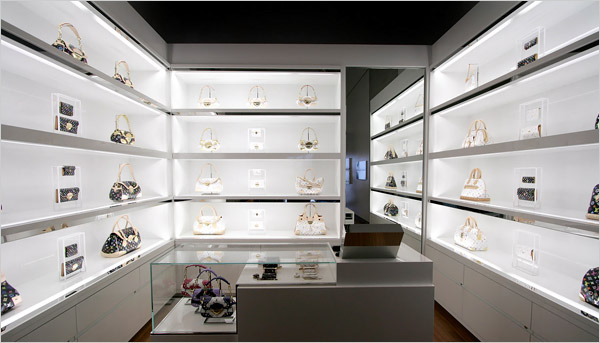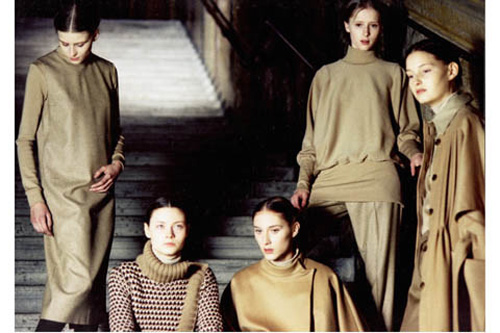Murakami, "Mr.Pointy." Photo by Julien Jourdes for The New York Times
The Murakami exhibition which is currently on view at the Brooklyn Museum, where it traveled from the Los Angeles Museum of Contemporary Art, has been extensively discussed, particularly in relation to the inclusion of a mini-Vuitton boutique carrying the Murakami-Vuitton products in the midst of the exhibition. The debate raised by the store inclusion is a testament to the still-fraught relation between fashion, art and commerce—or rather the fraught relation between art and commerce, which seems to come in sharper focus when said art is aligned with fashion—the quintessential commodity. (The relation between art and fashion ultimately seems to highlight the status of art as commodity—one which, at least within the confines of the art museum, still seems to make people uncomfortable. In this particular case, it suggests a continuum between museum-goers and consumers, or perhaps the notion of museum-goers as consumers of culture and luxury goods alike.)
However, what I found most interesting about the presence of the Vuitton “boutique” in the Brooklyn museum is not so much how it re-activated these debates, but rather how it framed the store and the activities within it as performative. It highlighted the ritualistic nature involved in the consumption of goods (particularly luxury goods) which often goes undetected. In the process, it made these generally seamless actions strange and slightly unsettling.
Vuitton Store at the Brooklyn Museum. Photo by Julien Jourdes for The New York Times
Witnessing a couple purchasing a Vuitton-Murakami bag from the store clerks dressed in pristine white shirts, the viewer was made acutely aware of the awkwardness of the exchange—the forced niceness of the sales clerk and the equally forced (at least in this context) nonchalance of the luxury shopper. This exchange became even more awkward as the museum-goers, following the unwritten rules applying to exhibition-viewing, stared intently at the space and the activities taking place within it, trying to decipher its meaning…
Francesca













